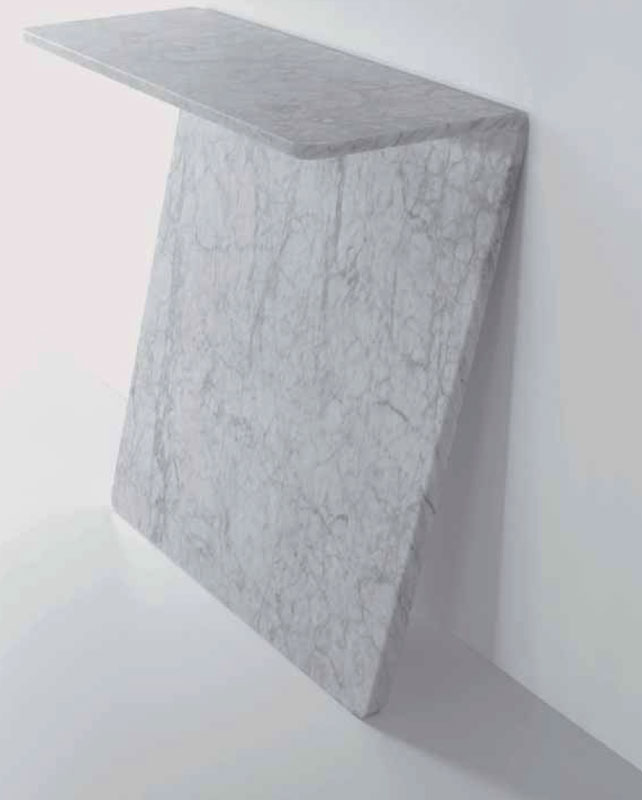For thousands of years marble has held a reputation as a grand material, its use in sculpture and building widespread. In a geological context there are three general types of rock formations: igneous, rocks formed through the solidification of molten magma or lava; sedimentary, formed by rock particles broken down by the action of weathering and cemented together over thousands of years; and metamorphic. Metamorphic rocks are those that have mutated from one rock type to another over prolonged time. Marble is one such rock, metamorphosing from limestone – or calcium carbonate.
Marble can be richly veined or a cold, matt white material which, when cut thinly, is capable of creamy translucence, but in either form it is an evocative material. The fine crystalline structure of marble – when compared to the visibly large grain of a rock like granite – distinguishes it from other materials. It is this fine structure that makes it good for carving and such a popular material for sculptures.
Veined marble has a consistent pattern throughout its thickness, which allows for adjacent slabs to be mirrored in order to match patterns; this characteristic is often used in architecture. Although it is a relatively hard, dense material it is not as resistant to abrasion nor does it have the hardness of granite, in fact, for a stone it is relatively soft, another reason why it carves so well into the beautiful sculptures that help define this material as one of luxury and decadence.
Image: Tilt table by Thomas Sandell

Key features
Compared with other stones:
•Low wear-abrasion resistance
•Low chemical resistance
•Less durable than granite
•Each piece is unique, although it is easier to match patterns than for granite
•High density and hardness
•Polishes to a glass-like finish
•Fades over time due to weathering
•Premium associations
•Porous
Sources
The UK has a number of quarries where marble is excavated, but Italy, Greece, Portugal and Scandinavia are all origins of marble.
Cost
As with other stone materials the hardness and the quarrying involved in production has high failure ratio, with only a small proportion being sold. This combined with the hardness of the material makes it expensive to mine.
Sustainability issues
The production and transportation creates a large carbon footprint as well as environmental destruction.
Production
Hand-cutting, sandblasting, CNC cutting, laser cutting and water jet cutting.
Typical applications
Marble Arch, the famous London landmark, is made from Carrara marble – a white marble named after the Italian region where it is mined. Other applications are sculpture and gravestones – although marble is not as hard-wearing as granite – and architectural elements.
| + | – |
|
–High density and hardness –Premium associations –Very good for carving |
–Expensive to mine and manufacture –High failure ratio of production –Low wear resistance –Low chemical resistance |
